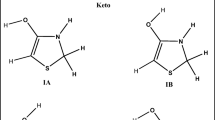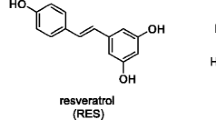Abstract
Aryl carbamates exhibit significant utility due to their diverse range of biological activities, including anticancer, antituberculosis, and antioxidant properties. This study will focus on a comparative evaluation of the antioxidant capabilities of two aryl carbamate derivatives, namely Methyl(Z)-(1-(hydroxyamino) ethyl)-5-(methoxycarbonyl) amino)-2-methyl-1H-indole 1 carboxylate (Compound 1) and Dimethyl (1,3-dioxo-2,3-dihydro-1H-indene-2,2-diyl) bis (4,1 phenylene) dicarbamate (Compound 2). To assess the anti-oxidant capacity, two distinct reactive oxygen species, such as highly reactive hydroxyl (HO·) and moderately reactive hydroperoxyl (HOO·), have been taken into consideration. Four distinct scavenging processes, including RAF, HAT, SETPT, and SPLET, have been investigated here. The RAF mechanism was determined to be the most effective anti-oxidant pathway, regardless of the compounds or free radicals investigated here. For both HO· and HOO·, compound 1 demonstrated more potent scavenging capabilities than compound 2. Compounds 1 and 2 react with the HO· radical very quickly due to its extraordinarily high reactivity; in contrast, the less reactive HOO· provides a rather moderate rate. The calculated values of overall rate constant of Comp. 1 reaction with HOO· are 3.7 × 103 M−1 s−1 (gas phase), 5.3 × 101 M−1 s−1 (water), and 3.6 × 100 M−1 s−1 (pentyl ethanoate). With this context it is clear both of the compounds can work as strong and mild antioxidant against HO· and HOO· radical, respectively.








Similar content being viewed by others
References
Niki E (2016) Antioxidant capacity of foods for scavenging reactive oxidants and inhibition of plasma lipid oxidation induced by multiple oxidants. Food Funct 7:2156–2168
Finkel T, Holbrook NJ (2000) Oxidants, oxidative stress and biology of ageing. Nature 408:239–247
Finkel T (2005) Radical medicine: treating ageing to cure disease. Nat Rev Mol Cell Biol 6:971–976
Hussain SP, Hofseth LJ, Harris CC (2003) Radical causes of cancer. Nat Rev Cancer 3:276–285
Ames BN, Shigenaga MK, Hagen TM (1993) Oxidants, antioxidants, and the degenerative diseases of aging. Proc Natl Acad Sci USA 90:7915–7922
Gülçin I (2012) Antioxidant activity of food constituents: an overview. Arch Toxicol 86:345–391
Ghosh AK, Brindisi M (2015) Organic carbamates in drug design and medicinal chemistry. J Med Chem 58:2895–2940
Meng Q, Luo H, Liu Y et al (2009) Synthesis and evaluation of carbamate prodrugs of SQ109 as antituberculosis agents. Bioorg Med Chem Lett 19:2808–2810
Naveen, Kumar Tittal R, Vikas GD et al (2020) Synthesis, antimicrobial activity, molecular docking and DFT study: aryl-carbamic acid 1-benzyl-1H-[1,2,3]triazol-4-ylmethyl esters. ChemistrySelect 5:6723–6729
Janganati V, Penthala NR, Madadi NR et al (2014) Anti-cancer activity of carbamate derivatives of melampomagnolide B. Bioorg Med Chem Lett 24:3499–3502
Shreder KR, Lin ECK, Wu J et al (2012) Synthesis and structure-activity relationship of (1-halo-2-naphthyl) carbamate-based inhibitors of KIAA1363 (NCEH1/AADACL1). Bioorg Med Chem Lett 22:5748–5751
Kuş C, Altanlar N (2003) Synthesis of some new benzimidazole carbamate derivatives for evaluation of antifungal activity. Turk J Chem 27:35–39
Solyev PN, Shipitsin AV, Karpenko IL et al (2012) Synthesis and anti-HIV properties of new carbamate prodrugs of AZT. Chem Biol Drug Des 80:947–952
Rogers SA, Lindsey EA, Whitehead DC et al (2011) Synthesis and biological evaluation of 2-aminoimidazole/carbamate hybrid anti-biofilm and anti-microbial agents. Bioorg Med Chem Lett 21:1257–1260
Férriz JM, Vávrová K, Kunc F et al (2010) Salicylanilide carbamates: antitubercular agents active against multidrug-resistant Mycobacterium tuberculosis strains. Bioorg Med Chem 18:1054–1061
Yanovsky I, Finkin-Groner E, Zaikin A et al (2012) Carbamate derivatives of indolines as cholinesterase inhibitors and antioxidants for the treatment of Alzheimer’s disease. J Med Chem 55:10700–10715
Kurt BZ, Gazioglu I, Kandas NO, Sonmez F (2018) Synthesis, anticholinesterase, antioxidant, and anti-aflatoxigenic activity of novel coumarin carbamate derivatives. ChemistrySelect 3:3978–3983
Estevão MS, Carvalho LC, Ribeiro D et al (2010) Antioxidant activity of unexplored indole derivatives: synthesis and screening. Eur J Med Chem 45:4869–4878
Jasiewicz B, Kozanecka-Okupnik W, Przygodzki M et al (2021) Synthesis, antioxidant and cytoprotective activity evaluation of C-3 substituted indole derivatives. Sci Rep 11:1–14
Gürkök G, Coban T, Suzen S (2009) Melatonin analogue new indole hydrazide/hydrazone derivatives with antioxidant behavior: synthesis and structureactivity relationships. J Enzyme Inhib Med Chem 24:506–515
Kolyada MN, Osipova VP, Polovinkina MA et al (2022) Evaluation of antioxidant properties of new functionally substituted aryl carbamates. AIP Conf Proc 2390:020035
Osipova VP, Polovinkina MA, Kolumbet AD et al (2022) Antiradical activity of polycyclic compounds with indole and isoindole moieties. Dokl Chem 505:159–163
Draganic IG, Draganic ZD (1971) The radiation chemistry of water. Academic Press, New York
Frisch MJ, Trucks GW, Schlegel HB, et al (2016) Gaussian 16, Revision A.03. Wallingford CT
Zhao Y, Truhlar DG (2008) The M06 suite of density functionals for main group thermochemistry, thermochemical kinetics, noncovalent interactions, excited states, and transition elements: two new functionals and systematic testing of four M06-class functionals and 12 other function. Theor Chem Acc 120:215–241
Rassolov VA, Ratner MA, Pople JA et al (2001) 6–31G* basis set for third-row atoms. J Comput Chem 22:976–984
Frisch MJ, Pople JA, Binkley JS (1984) Self-consistent molecular orbital methods 25. Supplementary functions for Gaussian basis sets. J Chem Phys 80:3265–3269
Hehre WJ, Ditchfield K, Pople JA (1972) Self-consistent molecular orbital methods. XII. Further extensions of Gaussian-type basis sets for use in molecular orbital studies of organic molecules. J Chem Phys 56:2257–2261
Galano A, Alvarez-Idaboy JR (2014) Kinetics of radical-molecule reactions in aqueous solution: a benchmark study of the performance of density functional methods. J Comput Chem 35:2019–2026
Zhao Y, Truhlar DG (2008) How well can new-generation density functionals describe the energetics of bond-dissociation reactions producing radicals? J Phys Chem A 112:1095–1099
Mandal D, Sahu C, Bagchi S, Das AK (2013) Kinetics and mechanism of the tropospheric oxidation of vinyl acetate initiated by OH radical: a theoretical study. J Phys Chem A 117:3739–3750
Marenich AV, Cramer CJ, Truhlar DG (2009) Universal solvation model based on solute electron density and on a continuum model of the solvent defined by the bulk dielectric constant and atomic surface tensions. J Phys Chem B 113:6378–6396
Galano A, Raúl Alvarez-Idaboy J (2019) Computational strategies for predicting free radical scavengers’ protection against oxidative stress: Where are we and what might follow? Int J Quantum Chem 119:e25665
Galano A, Alvarez-Idaboy JR (2013) A computational methodology for accurate predictions of rate constants in solution: application to the assessment of primary antioxidant activity. J Comput Chem 34:2430–2445
Gonzalez C, Bernhard Schlegel H (1989) An improved algorithm for reaction path following. J Chem Phys 90:2154–2161
Gonzalez C, Schlegel HB (1991) Improved algorithms for reaction path following: higher-order implicit algorithms. J Chem Phys 95:5853–5860
Dzib E, Cabellos JL, Ortíz-Chi F et al (2019) Eyringpy: a program for computing rate constants in the gas phase and in solution. Int J Quantum Chem 119:11–13
Dzib E, Cabellos JL, Ortiz-Chi F et al (2018) Eyringpy 1.0. 2. Cinvestav: Mérida, Yucatán
Evans MG, Polanyi M (1935) Some applications of the transition state method to the calculation of reaction velocities, especially in solution. Trans Faraday Soc 31:875–894
Eyring H (1935) The activated complex in chemical reactions. J Chem Phys 3:63–71
Truhlar DG, Hase WL, Hynes JT (1983) Current status of transition-state theory. J Phys Chem 87:2664–2682
Furuncuoǧlu T, Uǧur I, Degirmenci I, Aviyente V (2010) Role of chain transfer agents in free radical polymerization kinetics. Macromolecules 43:1823–1835
Velez E, Quijano J, Notario R et al (2009) A computational study of stereospecifity in the thermal elimination reaction of menthyl benzoate in the gas phase. J Phys Org Chem 22:971–977
Eckart BC (1930) The penetration of a potential barrier by electrons. Phys Rev 35:1303–1309
Wang G, Xue Y, An L et al (2015) Theoretical study on the structural and antioxidant properties of some recently synthesised 2,4,5-trimethoxy chalcones. Food Chem 171:89–97
Estévez L, Otero N, Mosquera RA (2010) A computational study on the acidity dependence of radical-scavenging mechanisms of anthocyanidins. J Phys Chem B 114:9706–9712
Kaur C, Mandal D (2023) The scavenging mechanism of aminopyrines towards hydroxyl radical: A computational mechanistic and kinetics investigation. Comput Theor Chem 1219:113973
Shang Y, Zhou H, Li X et al (2019) Theoretical studies on the antioxidant activity of viniferifuran. New J Chem 43:15736–15742
Zhou H, Li X, Shang Y, Chen K (2019) Radical scavenging activity of puerarin: A theoretical study. Antioxidants 8:1–9
Zheng YZ, Deng G, Chen DF et al (2018) Theoretical studies on the antioxidant activity of pinobanksin and its ester derivatives: Effects of the chain length and solvent. Food Chem 240:323–329
Zheng YZ, Deng G, Liang Q et al (2017) Antioxidant activity of quercetin and its glucosides from propolis: A theoretical study. Sci Rep 7:1–11
Alberto ME, Russo N, Grand A, Galano A (2013) A physicochemical examination of the free radical scavenging activity of Trolox: Mechanism, kinetics and influence of the environment. Phys Chem Chem Phys 15:4642–4650
Vo QV, Nam PC, Van BM et al (2018) Density functional theory study of the role of benzylic hydrogen atoms in the antioxidant properties of lignans. Sci Rep 8:1–10
Xue Y, Zheng Y, An L et al (2014) Density functional theory study of the structure-antioxidant activity of polyphenolic deoxybenzoins. Food Chem 151:198–206
León-Carmona JR, Galano A (2011) Is caffeine a good scavenger of oxygenated free radicals? J Phys Chem B 115:4538–4546
Boulebd H, Mechler A, Hoa NT et al (2020) Thermodynamic and kinetic studies of the antiradical activity of 5-hydroxymethylfurfural: Computational insights. New J Chem 44:9863–9869
Vo QV, Van Bay M, Nam PC, Mechler A (2019) Is Indolinonic Hydroxylamine a Promising Artificial Antioxidant? J Phys Chem B 123:7777–7784
Galano A (2011) On the direct scavenging activity of melatonin towards hydroxyl and a series of peroxyl radicals. Phys Chem Chem Phys 13:7178–7188
Nguyen NT, Dai VV, Mechler A et al (2022) Synthesis and evaluation of the antioxidant activity of 3-pyrroline-2-ones: experimental and theoretical insights. RSC Adv 12:24579–24588
Acknowledgements
D. Mandal is very much grateful to the Department of Science and Technology, Government of India, for providing the INSPIRE Faculty Fellowship (DST/INSPIRE/04/2016/001948) and Thapar Institute of Engineering and Technology SEED grant (TU/DORSP/57/7278). C Kaur is thankful to TIET for providing fellowship.
Funding
PES for the reactions of OOH radical, optimized geometry, cartesian coordinate, and thermochemistry of all the species are available in the supplementary information.
Author information
Authors and Affiliations
Contributions
D.M.: Conceptualization, analysis, and Writing- Reviewing and Editing. C.K.: Data calculation, investigation, Writing- initial draft preparation
Corresponding author
Ethics declarations
Conflict of interest
The authors declare no conflict of interest.
Additional information
Publisher's Note
Springer Nature remains neutral with regard to jurisdictional claims in published maps and institutional affiliations.
Supplementary Information
Below is the link to the electronic supplementary material.
Rights and permissions
Springer Nature or its licensor (e.g. a society or other partner) holds exclusive rights to this article under a publishing agreement with the author(s) or other rightsholder(s); author self-archiving of the accepted manuscript version of this article is solely governed by the terms of such publishing agreement and applicable law.
About this article
Cite this article
Kaur, C., Mandal, D. Insights into the HO· and HOO· radical scavenging activity of aryl carbamate derivative: a computational mechanistic and kinetic investigation. Theor Chem Acc 143, 28 (2024). https://doi.org/10.1007/s00214-024-03102-3
Received:
Accepted:
Published:
DOI: https://doi.org/10.1007/s00214-024-03102-3




